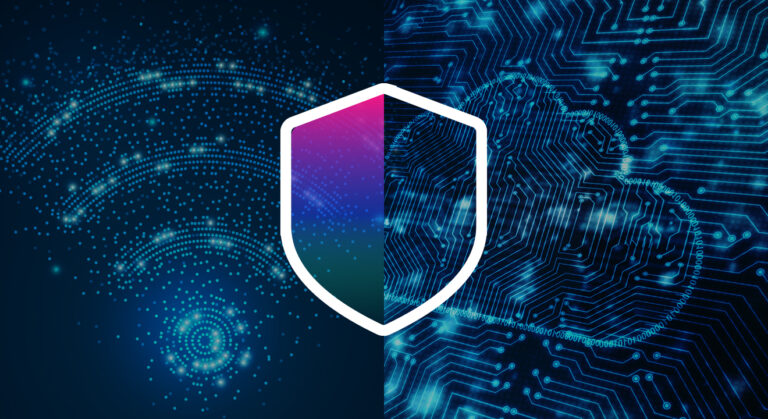Micro-businesses are an increasing target for cyberattacks. Here’s why network service providers should care — and what they can do to utilize this missed segment and steadily increase revenue.
Today, many small business networks are what we classify as “unmanaged security networks” ― in other words, these networks aren’t controlled or monitored by a CISO, although they are faced with similar security challenges as enterprises.
During recent years, as small business networks have grown increasingly complex through the adoption of smart devices, low-tier SMBs and SOHOs have become popular targets for cyber attacks due to their lack of security measures and proper defense layer on their routers and IoTs. Whereas cybercriminals of the past have more commonly targeted larger, more established companies in order to make a profit, the emergence of targeting small businesses has grown as a result of hackers seeking quick profits.
Without having an appointed overseer of security activity in a network, these unmanaged business networks are unable to monitor everything that connects to their network, apply the necessary security measures for each device, and respond to incidents when they occur.
On top of the fact [1] that small businesses are frequent targets of cyber attacks, this trend is fueled by the fact that an increasing number of employees are working from home (or anywhere) on a hybrid basis and closely rely on the devices that they regularly use while working remotely or on the move (like when working from a coffee shop). When considering the fact that over half of today’s US workforce has taken to using their personal computers for work purposes [2], it becomes clear just how crucial it is for small businesses to ensure protection on all devices within their network. It’s clear how widespread of a security risk that cyber attacks targeting small businesses have become: malware can infect just one innocent device and continue moving laterally within a network until it finds the right victim. This is why it’s paramount to accurately identify and protect IoTs with the right security policies for each device.
Read on to ensure that you’re taking the right measures to help your clients stay protected against cyber attacks targeting small businesses.
Which types of small businesses are affected by modern cyber threats?
Small businesses in virtually any sector or size can become an easy target for hackers. Think of a small law firm, a family-owned insurance company or even a freelancer working from their home office. Due to their size (typically 1 to 15 employees), lack of internal bandwidth, and non-functional (or non-existent) security solutions in place, these micro-businesses are often left unprotected against digital threats.
For network service providers with similar clients, it’s important that these businesses are equipped with the proper network-level protection in order to maintain the security of their network and employees’ devices alike.
Network-level protection is crucial for modern small and micro business networks. Going beyond the capabilities of a standalone firewall, network-level protection covers various areas of the business. By providing proper IT monitoring services, network-level protection ensures device firmware remains updated and business infrastructure remains secure.
Common cyber attacks targeting small businesses can lead to financial and data loss
Compromised devices on a small business network can have dire consequences for all parties involved: the business in question, its clients, and the network service provider managing the business network. For today’s micro-businesses, one successful attack could mean the end of business.
Modern cyber threats affect business networks when network-connected devices become infected with malware or viruses. This, in turn, can lead to large-scale issues including data loss, interruptions in business operations, and significant financial losses that can even lead to businesses shutting down completely. This is why business data protection is paramount.
Here’s an overview of some of the top vulnerabilities targeting small businesses:
- Phishing attacks: Phishing attacks make use of various social engineering techniques to gain access to a victim’s sensitive information or to influence them into carrying out specific transactions. Phishing attacks often come in the form of emails containing malicious links or attachments. Phishing remains an ongoing threat for small businesses, as employees can often be targeted with so-called spear phishing attacks, which use an individual’s personal information to target them even more closely. Due to the highly personalized nature of these threats, it can be difficult for businesses and employees to tell spear phishing attempts apart from legitimate business communications.
- SQL injection: This attack vector allows attackers to interfere with queries that a web application makes to its database. Not surprisingly, due to the nature of this threat, it continues to be a major problem for small businesses with web applications. SQL injection attacks can result in a compromised business server or other back-end infrastructure and can even carry out DoS attacks.
- DoS/DDoS attacks: Denial of service (DoS) and distributed denial of service (DDoS) attacks are two forms of cyber crime designed to shut down a machine or network, making it inaccessible to its intended users. For small businesses, these attacks can mean connectivity losses preventing business transactions. DoS and DDoS make it impossible for users to access their network as a result of hackers overloading targeted servers with too many requests for it to properly handle.
Are you taking the right measures to help your clients stay protected against cyber attacks targeting small businesses?
To protect against the growing range of cyberthreats, network service providers must leverage the right technology to deliver protection to business clients, such that would scan for threats in their network, secure the network, and perform ongoing threat analyses.
This is where SAM comes in: We offer several unique benefits that network service providers and their small business clients can take advantage of:
- Our solution makes use of low-cost hardware, integrates with ANY router and provides meaningful features to SOHOs
- We address low-tier SMBs and SOHOs that currently use high-rate consumer packages that doesn’t fit their needs
- Micro-businesses using residential routers must have a powerful network security layer in place. With SAM installed on top of the existing gateway, these businesses don’t need to implement a more expensive, complex firewall solution and can still enjoy the same level of protection
- We not only scan for vulnerabilities within security networks, but we also assess them, alerting problematic devices of active risks and providing valuable recommendations on how to mitigate them through implementing and enforcing comprehensive security policies
Network service providers can think of our solution as an “enabler package” which allows them to find a happy medium between high-end consumer plans and overly expensive plans designed for SMBs. Unlike many other small business security solutions that are complex and require a security expert to configure and manage, SAM provides a seamless, digital solution with a user-friendly UI that doesn’t require prior security or IT expertise.
By relying on SAM as a security provider, network service providers have the opportunity to utilize a missed segment that they can use to steadily increase revenue.
Take protection with you wherever you go. Say hello to your automated CISO with SAM OPUS.
——————————-







